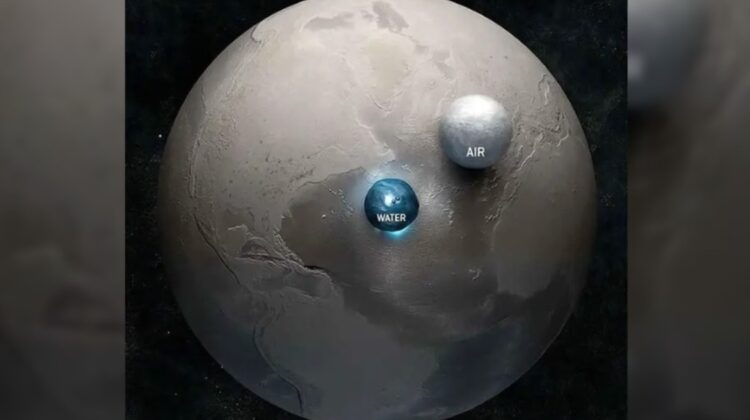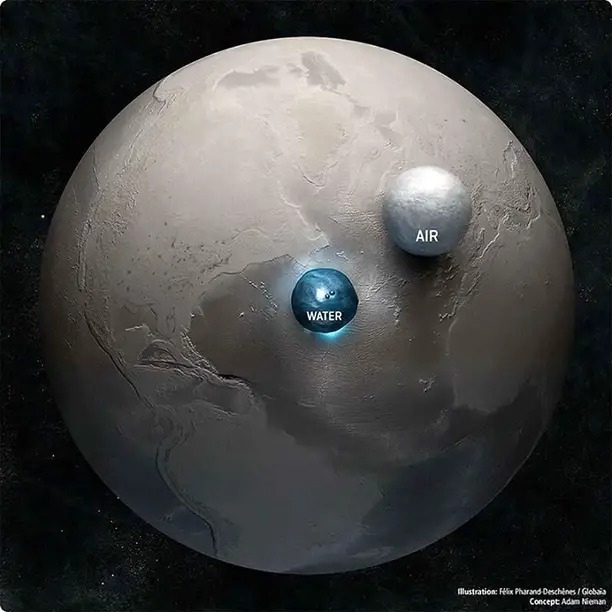
In 2003, Dr. Adam Nieman created an awe-inspiring image that visually depicted the vastness of Earth’s oceans and atmosphere. Rendered as spheres next to our planet, these representations showcased the sheer magnitude of these essential elements.
Dr. Nieman’s remarkable image earned him the prestigious Novartis/Daily Telegraph Visions of Science photo competition award. It captivated viewers with a fresh perspective on our water-rich world. From space, Earth appears as a water planet, with over 70 percent of its surface covered by oceans that extend to an average depth of 14,000 feet (4267 meters).
However, this image also reveals a startling fact: If every drop of water on Earth were collected into a single sphere, it would measure a mere 869 miles (1400 km) across, just enough to cover Eastern Europe. This visual representation highlights the limited availability of freshwater resources and the importance of conservation efforts.

The image further showcases the immense volume of Earth’s atmosphere. A staggering 5140 trillion tonnes of air, if gathered and compressed at sea-level density, forms a colossal ball alongside our planet. The atmosphere plays a vital role in sustaining life, shielding us from the harshness of space and facilitating weather patterns.
Approximately three-quarters of the atmosphere’s mass lies within a relatively narrow band of about 11 km (6.8 mi; 36,000 ft) above the Earth’s surface. As we ascend, the atmosphere gradually thins out, with no distinct boundary between it and outer space. The outermost layer, known as the Exosphere, extends from an altitude of around 700 km above sea level to approximately 10,000 km (6,200 mi; 33,000,000 ft), blending into the solar wind.
The Kármán line, located at 100 km (62 mi) above Earth’s surface, marks a commonly accepted threshold between the atmosphere and outer space. Notably, atmospheric effects become noticeable during the reentry of spacecraft at an altitude of approximately 120 km (75 mi).
Reflecting on our shared existence on this small planet, it becomes clear that we all depend on the same fundamental elements. As President John F. Kennedy once said, “Our most basic common link is that we all inhabit this small planet. We all breathe the same air.”
The remarkable image by Dr. Adam Nieman serves as a potent reminder of the interconnectedness of our world and the importance of preserving and cherishing the precious resources that sustain life on Earth.

Leave a Reply